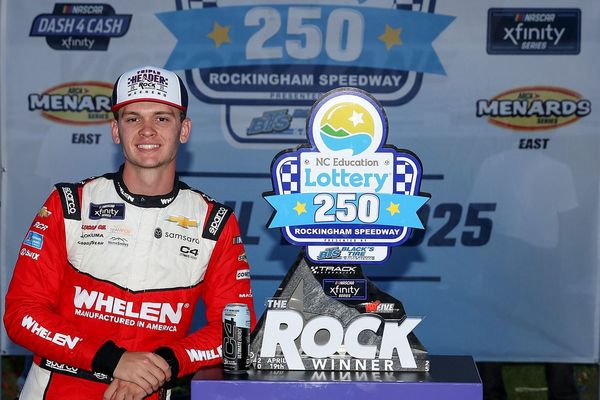
Using cardboard, make habitation a better place. Draw a tree of your imagination or that you can see. Have fun and clean up.
These are some of the instructions you will be invited to follow if you visit Bundanon Art Museum on the New South Wales south coast in the coming months. Should you accept, you will become part of a new large-scale installation by Filipino-born husband-and-wife artist duo Isabel and Alfredo Aquilizan that explores the tree as a symbol of home and community.
“We really love involving everyone in the actual process of making work,” Isabel says. “It demystifies the idea of art as an individual pursuit.”
The Aquilizans’ Reflections/Habitations is part of Bundanon’s group exhibition Thinking Together: Exchanges with the Natural World, and consists of two parts: a wall of drawings, and a large-scale “accumulative” sculpture of a toppled tree, made from a grid of timber beams covered in small cardboard sculptures. Visitors are invited to create their own sculptures and drawings in the adjacent gallery to be added to the installation over the course of the exhibition.
“It’s such a generous offer they make,” says Sophie O’Brien, Bundanon’s head of curatorial and learning, “Which is: ‘We’ll make this work together.’”
By welcoming audiences to co-create, the Aquilizans also hope to prompt reflection: how do trees – fallen or living – provide homes for humans and non-humans? How are deforestation and overdevelopment connected? And, what does it mean to create a “home”?
This final question is one that the Aquilizans have been asking themselves and their audiences since 2006, when they moved to Australia with their five children. From that point onwards, home has “always been a recurring narrative in our work”, says Isabel – “because we are migrants”, Alfredo adds. They joke, in their characteristically warm and self-deprecating manner, that they now have three citizenships – as Filipinos, Australians and senior citizens.
One of the Aquilizans’ first explorations of “home” was at the 2006 Biennale of Sydney, which coincided with their move. “We always try to share our story depending on what is happening, our art and our life have never been separate,” Isabel says.
Their biennale installation, Project Be-longing: In Transit, documented their relocation to Australia via 12 neat stacks of personal items, each perfect cube creating the illusion that the cardboard of a packing box had vanished to reveal its contents. Referencing the Filipino migrant tradition of sending balikbayan (returning home) boxes of items to family members, it was a deeply personal portrait of a home in flux.
Many of the Aquilizans’ works similarly draw on everyday objects, including thongs, bed sheets and sickles. However, it is their large-scale cardboard sculptures built with community participation (like the one at Bundanon) for which they have become most well-known.
They trace their interest in co-creating to their roots in south-east Asia, where sharing and helping each other is part of everyday life, as well as to their five children, who were involved with their parents’ artworks from an early age. This has continued into adulthood, with the family now working as “a kind of collective”, Isabel says.
Over the past two decades the Aquilizans have built iterations of their striking ephemeral sculptures with a huge number of communities on almost every continent, at major institutions such as the Art Gallery of NSW, Groninger Museum in the Netherlands and Museum Macan in Indonesia, as well as community spaces.
Perhaps their most significant co-made cardboard work is In-Habit: Project Another Country, a multi-year travelling sculpture that began in 2010. As it has toured and been rebuilt and added to by different audiences – first in Australia then Japan, Indonesia, the Philippines and many other countries – it embodies its themes of change, displacement and settlement.
Reflections/Habitations is similar in approach to their previous sculptures but reflects an expansion of their ideas around home to include nature, specifically trees and canopies. “This exhibition is asking everyone to reflect not just within, but also especially what’s happening around us,” Alfredo says.
It feels fitting that the Aquilizans are exploring what “home” means in Bundanon, the former home of prominent husband-and-wife arts figures Arthur and Yvonne Boyd. The Boyds saw their home as somewhere they could foster a creative community, protect the environment and leave a lasting legacy for Australian culture. “They knew from the very beginning they were going to give it away,” O’Brien says. “Arthur spent years churning out paintings, to be able to afford to pay it off and gift it [to the Australian government, in 1993]. It was a real social project.”
When I ask the Aquilizans’ question back to them – “What does home mean to you?” – they speak of their decision to move back to the Philippines in 2024. “We feel we have more to contribute by being there,” they say. “We have political issues, economic problems and so on – at the end of the day, you cannot just rely on the system. You have to find alternative ways to do things.”
To this end, they are currently building a new collective workspace, studio and home that will support local artisans and preserve endangered craft skills through art projects and international collaborations.
Like the Boyds, the Aquilizans recognise the power of the art market to support their endeavour. While they have historically made noncommercial works, they are increasingly collaborating with local metalsmiths, artisans and re-skilled farmers as well as their gallery, Ames Yavuz, to create collectible pieces, often drawing from their co-created sculptures for details and inspiration.
So: should you contribute to their sculpture in Bundanon, a little part of your work may live beyond the exhibition – helping to create a generously expanded notion of who and what art is for, and what a home can be.
Reflections/Habitations is part of the exhibition Thinking Together: Exchanges with the Natural World, on until 8 June at Bundanon Art Museum, Shoalhaven







